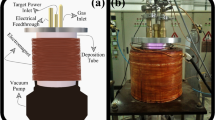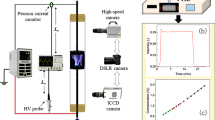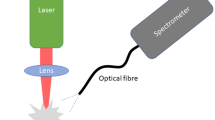Abstract
Ion mobility spectrometry is a well-known method for fast trace gas detection. Detection limits in the very low ppb- and even ppt-range, fast response times down to a second and good separation power combined with a reasonable instrumental effort make ion mobility spectrometry more and more attractive. Aiming for higher separation power we investigate the ion specific lifetime of different ion species in a field free reaction region of a drift tube ion mobility spectrometer equipped with a pulsed non-radioactive electron gun. When turning off the electron gun ionization stops and the total ion concentration in the reaction region starts to decrease, while different ion species have different decay times. By varying the time delay between the end of the ionization and the injection pulse transferring all remaining ions of one polarity from the reaction region into the drift region the individual decay times can be measured. Our experimental data show that the lifetime of ion species in a field free reaction region mainly depends on ion-ion-recombination and charge transfer reactions leading to significant lifetime differences. Therefore, short-lived ions can be effectively suppressed in the reaction region by introducing a sufficient time delay between the end of the ionization and the injection pulse. This allows detecting even smallest concentrations of long-lived ions in a complex short-lived background. From our experimental data it can be also concluded that wall losses and the ion transport within the sample gas stream out of the reaction region just play a minor role in the ion loss.















Similar content being viewed by others
References
Eiceman GA, Karpas Z (2005) Ion mobility spectrometry. CRC Press
Borsdorf H, Eiceman GA (2006) Ion mobility spectrometry: principles and applications. Appl Spectroscopy Rev 41:323–375
Borsdorf H, Mayer T, Zarejousheghani M, Eiceman GA (2011) Recent developments in ion mobility spectrometry. Appl Spectroscopy Rev 46:472–521
Gunzer F, Ulrich A, Baether W (2010) A novel non-radioactive electron source for ion mobility spectrometry. Int J Ion Mobil Spectrom 13:9–16
Wieser J, Murnick DE, Ulrich A, Huggins HA, Liddle A, Brown WL (1997) Vacuum ultraviolet rare gas excimer light source. Rev Sci Instrum 68:1360–1364
Morozov A, Heindl T, Skrobol C, Wieser J, Kruecken R, Ulrich A (2008) Transmission of ∼10 keV electron beams through thin ceramic foils: measurements and Monte Carlo simulations of electron energy distribution functions. Eur Phys J D 48:383–388
Morozov A, Heindl T, Kruecken R, Ulrich A, Wieser J (2008) Conversion efficiencies of electron beam energy to vacuum ultraviolet light for Ne, Ar, Kr, and Xe excited with continuous electron beams. J Appl Phys 103:103301
Guharay SK, Dwivedi P, Hill HH Jr (2008) Ion mobility spectrometry: ion source development and applications in physical and biological sciences. IEEE Trans Plasma Sci 36:1458–1470
Gunzer F, Zimmermann S, Baether W (2010) Application of a non-radioactive pulsed electron source for ion mobility spectrometry. Anal Chem 82:3756–3763
Baether W, Zimmermann S, Gunzer F (2010) Investigation of the influence of voltage parameters on decay times in an ion mobility spectrometer with a pulsed non-radioactive electron source. Int J Ion Mobil Spectrom 13:95–101
Gunzer F, Baether W, Zimmermann S (2011) Investigation of dimethyl methylphosphonate (DMMP) with an ion mobility spectrometer using a pulsed electron source. Int J Ion Mobil Spectrom 14:99–107
Hill CA, Thomas CLP (2005) Programmable gate delayed ion mobility spectrometry-mass spectrometry: a study with low concentrations of dipropylene-glycol-monomethyl-ether in air. Analyst 130:1155–1161
Kanu AB, Gribb MM, Hill HH Jr (2008) Predicting optimal resolving power for ambient pressure ion mobility spectrometry. Anal Chem 80:6610–6619
Morozov A, Kruecken R, Ulrich A, Wieser J (2006) Spatial distribution of fluorescent light emitted from neon and nitrogen excited by low energy electron beams. J Appl Phys 100:093305
Jungblut H (1981) Experimental investigation of ion mobility, recombination, and charge carrier multiplication in electro-negative gases. Dissertation FU Berlin
von Engel A (1965) Ionized gases. Oxford Univ. Press
Loeb LB (1955) Basic processes of gaseous electronics. Univ. of California Press
Author information
Authors and Affiliations
Corresponding author
Rights and permissions
About this article
Cite this article
Cochems, P., Gunzer, F., Langejuergen, J. et al. Selective ion suppression as a pre-separation method in ion mobility spectrometry using a pulsed electron gun. Int. J. Ion Mobil. Spec. 15, 31–39 (2012). https://doi.org/10.1007/s12127-011-0084-7
Received:
Revised:
Accepted:
Published:
Issue Date:
DOI: https://doi.org/10.1007/s12127-011-0084-7




